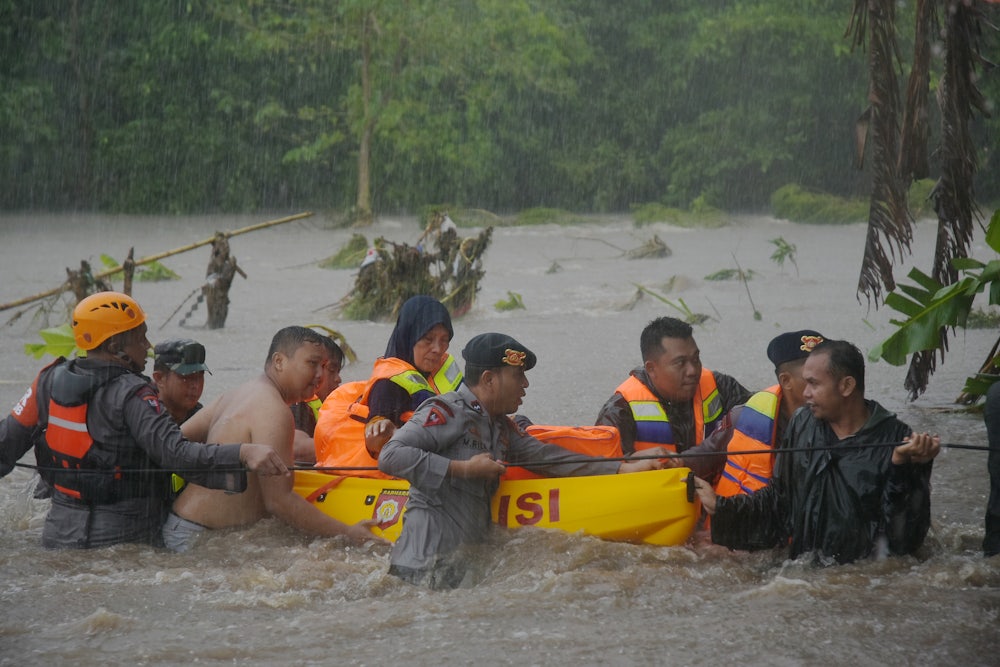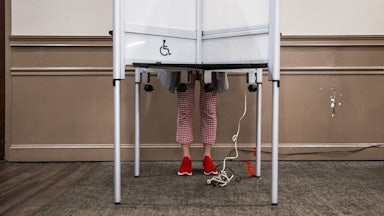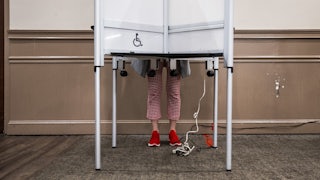Climate circles have been quietly humming in the
past couple of weeks with a dangerous conversation: that maybe, just maybe, it’s
time to give up on limiting global warming to 1.5 degrees Celsius and switch
instead to a goal of limiting warming to two degrees Celsius. At COP 27, the United
Nation’s climate summit in Egypt, negotiations closed Sunday with a silver
lining—that rich nations, including the United States, would help fund an
institution to address climate-related loss and damage in vulnerable nations.
But talk of switching to a two degrees Celsius goal target casts a pall over this news, suggesting
that global commitments to climate justice remain patchy at best.
Like all forms of climate defeatism, giving up
on 1.5 degrees Celsius (2.7 degrees Fahrenheit) is a conversation for the
privileged: 1.5 degrees of warming will already cause vast destruction to
climate-vulnerable places, such as communities reliant upon coral reefs. For
many more parts of the world, an additional half-degree of warming is the
difference between losing one’s house and losing one’s homeland. Unlike the climate
threats faced by the wealthy, including the dignitaries and well-heeled NGO
staff at COP27, the question for these communities boils down to survival, not
strategy.
This statistical hand-wringing has been a long
time coming: Rich countries’ delay in instituting serious emissions-reducing
policies in the past few years has made meeting the 1.5 degrees goal
increasingly unlikely. But the brass tacks conversation had been deferred
until The Economist published
a cover story two
weeks ago, titled “Say Goodbye to 1.5°C.” It was
a like dam bursting. Scientists and climate leaders began arguing that shifting
to two degrees Celsius (3.6 degrees Fahrenheit) would bolster the movement’s
credibility. An open letter released in September and signed by more
than 1,000 academics states, “There is no plausible pathway to
1.5°C.” In a Slack thread, a colleague of mine warned of “reputational
risks to not adjusting our language/goals to the facts on the ground.”
What are those facts? The world will almost
certainly exceed 1.5 degrees of warming in the next 30 years. Earth has
already sustained a full degree of warming. To avoid adding more than another
half-degree would require a global coordinated push. It’s not technically
impossible, but it seems at odds with the tepid climate politics of 2022. So
1.5 degrees of warming will likely arrive by the middle of the century. The question is: Should humanity march instead to the two-degrees finish line (which would still require aggressively
bending the curve of global emissions) or fight tooth and nail to regain
the lost ground?
The Intergovernmental Panel on Climate Change, the world’s leading authority on
climate science, wrote a special
report in 2019 on the importance (and difficulty) of limiting
warming to 1.5 degrees Celsius. The report found that the additional
half-degree of warming between 1.5 degrees and two degrees could melt an area of
permafrost the size of Wyoming. It would increase the likely incidence of an
ice-free summer in the Arctic Ocean from once per century to once per decade.
The estimated loss of the planet’s coral reefs would increase from 70 to 90
percent, at the 1.5 degree mark, to more than 99 percent at the two-degree mark.
The number of people experiencing climate-induced water stress could
double.
These impacts pose a limited risk to the
globe-trotting few. For most of the attendees at COP27—which included a
staggering number of fossil fuel lobbyists—coral
reefs are for snorkeling, sea ice is for polar bears, and water stress means
turning off the sprinklers in the front yard. With relatively little on the
line, it’s easy for this demographic to couch their arguments in the language of
“strategy” and reputational risks.
But climate change is not a one-way road.
Moreover, many repercussions from two degrees of warming, including sea level
rise, will unfold over generations. Even in 2050, there will be time for humans
to put fossil carbon back in the ground where it belongs, and in doing so avoid
the most catastrophic climate hazards.
The IPCC calls this strategy the “overshoot,”
and it’s become the linchpin of its preferred roadmap to climate stability.
In an overshoot scenario, global temperature will rise above the horizon of 1.5
degrees Celsius for a decade or two, before dipping back again. The overshoot
requires negative emissions: taking carbon dioxide out of the atmosphere and
returning it to the soil, oceans, and bedrock.
Carbon dioxide removal is well studied, and
while direct air capture technology remains wildly expensive and mired in controversy, low-tech solutions are abundant and cheap.
These range from changing
farming practices to burying
seaweed. But despite a torrent of start-ups flush with venture capital, the
simplest and most cost-effective way to remove atmospheric carbon remains
converting land used for animal agriculture to healthy forest.
Turning back the clock on global emissions is
essential to keeping the dream of 1.5 degrees alive. It’s not giving up on a
goal; it’s doubling down on one. (It’s also the raison d’être for the
“net” part of “net zero,” which otherwise merely serves as a way for
corporations to claim climate-friendliness while pushing emissions reductions
off into a hypothetical future.)
The climate movement’s latest numerological
debate is evidence of a poorly kept secret: These goals are the product of
politics as much as science. The truth is that there is no “safe” level of
climate change, only degrees of damage. If we are committed to climate
justice, we must let the most vulnerable set the agenda for the most
privileged—not the other way around.
By the Numbers
Giving Up on Limiting Warming to 1.5 Degrees Celsius Is a Luxury Only the Rich Can Afford
The growing consensus that two degrees Celsius wouldn’t be so bad could spell doom for vulnerable communities.

Zul Kifli/Pacific Press/LightRocket/Getty Images
Members of the National Search and Rescue Agency evacuate residents trapped in floods in Parepare City, Indonesia, on November 18.









